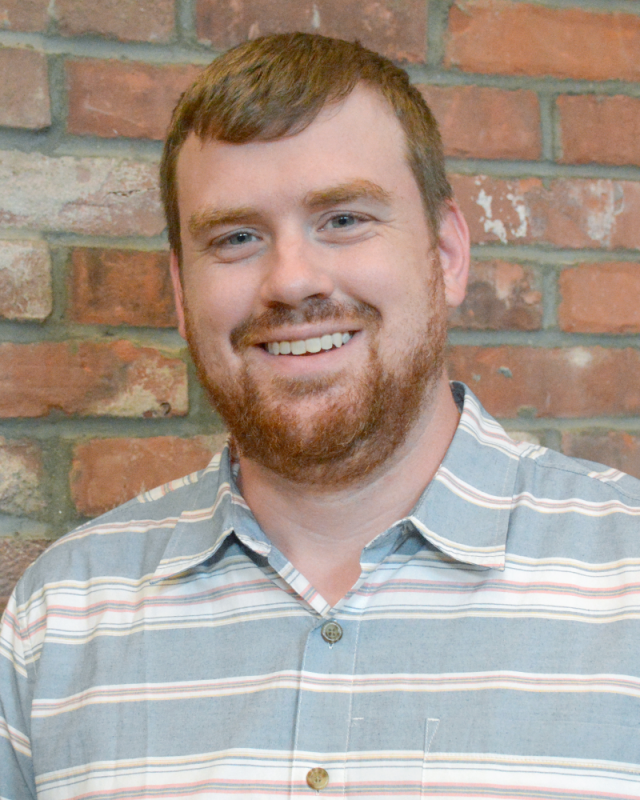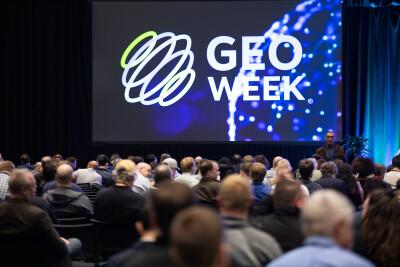This year’s Geo Week conference and exhibition, held in Denver, Colorado in February, was a resounding success, with over 3200 professionals attending this year’s event and 215 exhibitors, both of which were records. More than a month after the event, the industry is still buzzing over the conversations and presentations that took place over the course of those three days, with takeaways and insights being brought to the office and into projects.
Of course, not everyone is ever able to attend every event, and we wanted to give those who couldn’t attend a chance to experience some of those takeaways, as well as give those who did attend a chance to review some of those major insights. So, earlier this month, we invited three speakers from this year’s conference to join our Carla Lauter on a webinar entitled Beyond the Conference: Key Trends Shaping Geospatial Tech. The on-demand recording is available for free by registering here, and below you can find a quick recap of some of the topics touched upon in the hour-long conversation.
To start, the webinar featured the following three speakers:
Bill Wallace, Founder, AR Mavericks
Amar Nayegandhi, Global Head of Technology and Innovation, Woolpert
Dan Bellissemo, Director of Lidar and Remote Sensing, GIS Surveyors, Inc.
As noted, the conversation focused on the biggest trends and insights these three speakers took away from their time at Geo Week 2025, with the webinar starting with each giving a quick rundown of their personal biggest takeaways before jumping into broader discussions. All three talked about the buzz at Geo Week this year, with Wallace talking about how he felt this year the event “found its voice.” In terms of the major trends, technologically speaking, the conversation ultimately fits into a few different buckets.
The first started with the presentation with Wallace, who talked a lot about the democratization of reality capture. This idea has been a major talking point within the industry for years now, and as Wallace mentions, it’s largely been driven by marketing strategies from companies. However, there is an increasing amount of truth to the idea, with both positives and negatives coming out of it. Wallace talked about both sides of that coin – the surveyors’ perspective that people may be intruding on their turf, and the idea that more people can complete different types of projects – to start the conversation.
Digital twins were a major part of the discussion as well, particularly with regard to larger and larger digital twins. Nayegandhi talked about a session he moderated that focused on exactly this topic around digital twins for cities and even entire countries. He talked a lot about the ways that this technology is starting to revolutionize the way urban planning takes place, with these digital twins enabling “more responsive governance,” in his words. He specifically pointed to disaster preparedness as one of the immediately apparent impacts of these digital twins.
And finally, Bellissemo led the discussion around just how much this industry is growing. He talked about how the entire geospatial industry is clearly becoming more important globally, and how that was very much reflected in the attendance and energy around this year’s event. One of the ways that has come through is in the growing number of verticals present at the show, and with which his company is working. He notes that today, less than five percent of his lidar processing work is coming from the government, a testament to that increasingly wide net within the sector. Additionally, this led to a discussion around the need for more qualified workers in the industry, and how to attract that young talent to the sector.
Unsurprisingly, one of the themes that really underpinned the entire discussion around these three major topics and others was artificial intelligence. It plays into all of what was discussed above, in particular the digital twins and workforce issues. For the former, Nayegandhi said that, more and more, AI is becoming the “foundation of digital twins.” Around the workforce issue, Bellissemo talked about how there is often fear around AI being something that is going to replace workers, but it’s not the way things are or should be working.
“In my opinion, AI and machine learning must start with a human, end with a human, and have human interaction while it’s working,” he said.
This is just a snippet of what was discussed in the hour-long conversation about the state of the industry and where we’re heading, with inspiration being taken from Geo Week 2025. Whether you were able to attend this year’s event in Denver or you couldn’t make it, this conversation is a must-watch, and can be accessed for free here.






